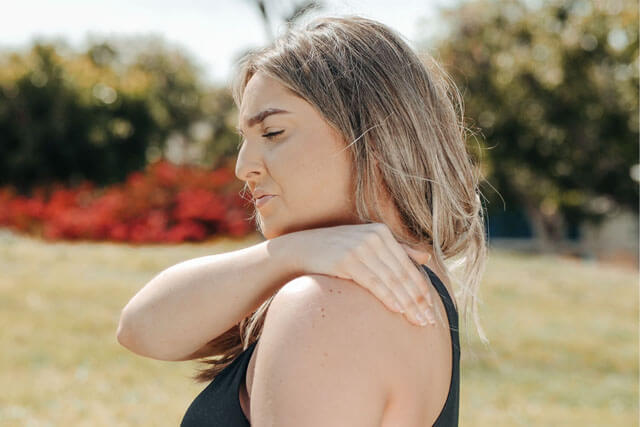Rotator Cuff Tear

Rotator Cuff Tear
The shoulder is a ball and socket joint consisting of three bones: the humerus, scapula (shoulder blade), and collar bone. The rotator cuff is a combination of four muscles that stabilize and give strength to the shoulder joint.
What is it?
A tear in one of the four muscles of the rotator cuff: supraspinatus, infraspinatus, teres minor, subscapularis.
Symptoms
- Dull deep ache within the shoulder
- Disturbs sleep, especially difficult to sleep on the affected side
- Arm weakness
- Difficult to reach overhead or behind your back
Causes
- Trauma - acute tears can happen from a fall on an outstretched arm. Also lifting heavy objects forcefully
- Age - risk of a rotator cuff tear increases with age, most commonly with people over 60
- Use - jobs like painters or carpenters, with repetitive overhead motions
- Sports - rowing, surfing, paddling, volleyball, weightlifting
Diagnosis
The Compass Pain and Spine can diagnose a rotator cuff tear during a comprehensive history and physical examination. In addition, we may also request diagnostic tests such as an MRI or ultrasound.
The rotator cuff muscles and tendons hold your upper arm bone in your shoulder socket. A hard fall, repetitive arm motions or problems with the structure of your shoulder can injure the rotator cuff.
Treatment
The Compass Pain and Spine will create a personalized treatment plan for you. If your degree of pain and limitation of function is minimal and the rotator cuff tear is minimal, we may prescribe anti-inflammatories and physical therapy. If your rotator cuff tear and degree of limitation are more advanced, in addition to physical therapy we may recommend regenerative medicine therapy. This may include PRP (platelet rich plasma) or stem cell injection under ultrasound guidance to help repair the damaged tissue. If your rotator cuff tear is complete and your function is severely affected, we may recommend arthroscopic surgery to correct and reattach a completely torn tendon. We combine this with a post-operative course of physical therapy to get you back to a healthy, functional state of activity.